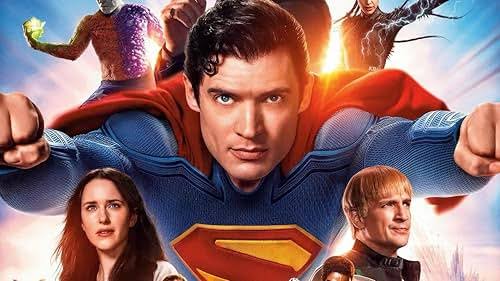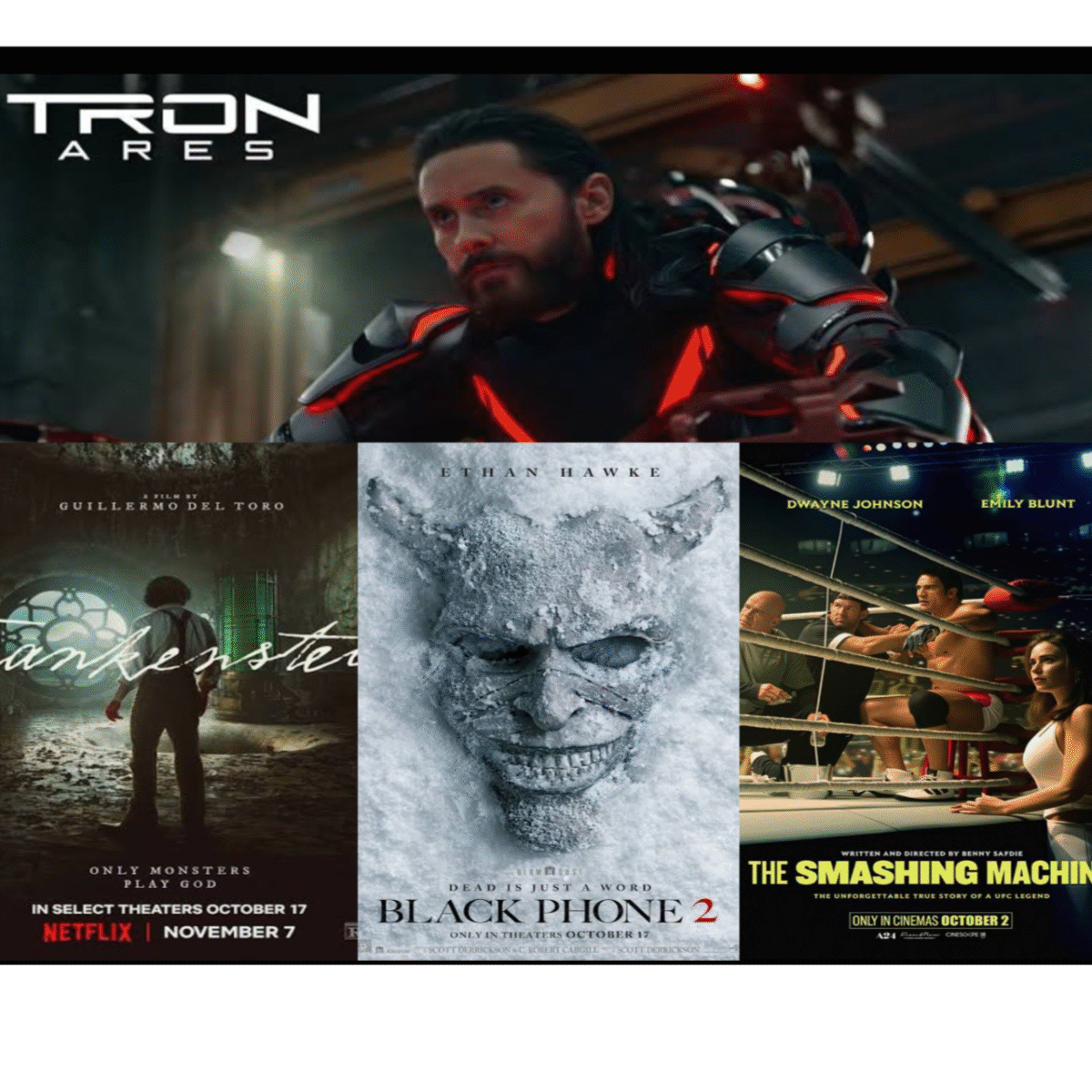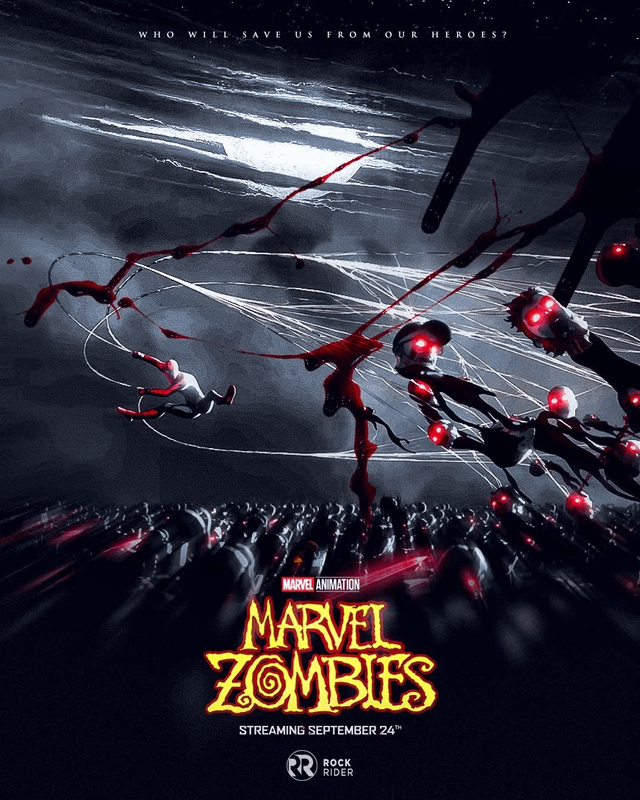How James Gunn’s Superman sets the stage for the DCU, multiverse saga

Superman 2025 theatrical release poster. Photo Credit- IMDb
James Gunn’s Superman has soared into theaters, marking not just the return of the Man of Steel but the official launch of the rebooted DC Universe (DCU), a bold new chapter for DC Studios under the creative stewardship of Gunn and co-CEO Peter Safran. With David Corenswet donning the iconic red and blue suit, the film serves as more than a standalone superhero epic it’s a foundational pillar for a sprawling, interconnected franchise that promises to weave together films, TV shows, animation, and video games into a cohesive narrative tapestry. But beyond its role as the DCU’s opening movie, Superman subtly lays the groundwork for a potential multiverse saga, a storytelling device that could redefine DC’s cinematic landscape. Here’s how Gunn’s vision for Superman sets up the future of the DCU and hints at a multiverse saga that could rival the ambition of Marvel’s cinematic universe.
The DCU’s chapter one and Superman’s role
The DCU, a soft reboot of the much-maligned DC Extended Universe (DCEU), kicked off technically with the animated series Creature Commandos in December 2024, but Superman is considered the “true start” of the franchise’s first phase, dubbed “Gods and Monsters.” This phase, inspired by the morally complex storytelling of Game of Thrones and the expansive world-building of Star Wars, introduces a universe where superheroes have existed for centuries, with metahumans shaping Earth’s history as far back as the 19th century.
Gunn’s Superman is not an origin story but a character-driven exploration of a 25-year-old Clark Kent balancing his Kryptonian heritage with his human upbringing. The film introduces key players like Lois Lane (Rachel Brosnahan), Lex Luthor (Nicholas Hoult), and a team of superheroes tentatively called the “Justice Gang,” including Green Lantern Guy Gardner (Nathan Fillion), Hawkgirl (Isabela Merced), Mister Terrific (Edi Gathegi), and Metamorpho (Anthony Carrigan). These characters, alongside cameos from Peacemaker (John Cena) and a surprise appearance by Supergirl (Milly Alcock), plant seeds for future projects while establishing a tone of optimism, kindness, and interconnectedness that contrasts with the darker, more fragmented DCEU.
The film’s opening scroll reveals that superheroes have been active for 300 years, hinting at a rich historical backdrop that includes the Justice Society, a precursor to the Justice League, spotted in a painting at the Hall of Justice. This deepens the DCU’s lore, suggesting that upcoming projects like Swamp Thing and The Brave and the Bold could explore this long history of metahumans, setting the stage for a Justice League film that Gunn has confirmed is part of his long-term plans.
RELATED STORIES
Superman Review: A Bold Reboot That Flies High but Carries Too Much
Wonder Woman returns: What we know about the DCU’s reimagined heroine
How Gunn’s Superman can set the future of DCU
Superman is a masterclass in world-building, subtly teasing multiple upcoming projects without overwhelming audiences. Here are the key ways it sets up the DCU’s future:
The introduction of the Justice Gang led by Maxwell Lord (Sean Gunn) and featuring Guy Gardner, Hawkgirl, Mister Terrific, and later Metamorpho serves as a proto-Justice League, a team of heroes uniting in response to growing threats like Lex Luthor’s schemes and extraterrestrial dangers. Their dynamic, particularly the contrast between Gardner’s impulsiveness and Terrific’s logic, offers a blueprint for a future Justice League. Gunn has confirmed that a Justice League movie is inevitable, with Superman’s closing moments hinting at a larger team forming to combat intergalactic and moral challenges. The film’s focus on Superman as a unifying figure suggests he’ll be central to this eventual crossover event.()
The film’s final scene introduces Kara Zor-El (Milly Alcock) in a surprising, chaotic cameo, stumbling into the Fortress of Solitude with Krypto the Super-Dog, who is revealed as her companion rather than Superman’s. This sets up Supergirl: Woman of Tomorrow (June 26, 2026), a “big science fiction epic” inspired by Tom King’s comic, exploring Kara’s traumatic upbringing on a surviving fragment of Krypton. The inclusion of Jason Momoa as Lobo in this film further ties it to Superman, as Lobo’s chaotic energy could echo the extraterrestrial threats teased in the 2025 film. ()
A brief cameo by Peacemaker during a news broadcast mocks Superman’s idealism, setting up the second season of Peacemaker (August 21, 2025), which will explore Rick Flag Sr.’s (Frank Grillo) quest for revenge against Peacemaker for killing his son in The Suicide Squad. Viola Davis’s Amanda Waller, a carryover from the DCEU, also appears in Creature Commandos and is confirmed for a spinoff series, reinforcing the interconnectedness between TV and film in the DCU. These projects will delve into the darker, morally gray corners of the DCU, contrasting with Superman’s hopeful tone.
The Engineer (Maria Gabriela de Maria Chacon), a member of the anti-hero team The Authority, appears in Superman, hinting at their upcoming film. The Authority, known for their morally complex approach to heroism, could introduce characters like Midnighter and Apollo, expanding the DCU’s diversity. Other projects like The Brave and the Bold (focusing on Batman and his son Damian Wayne) and Swamp Thing are teased indirectly through the film’s establishment of a world filled with gods, monsters, and mystical forces.
Finally, Lex Luthor’s creation of a pocket dimension in Superman, where he imprisons characters like Metamorpho introduces the concept of alternate realities without diving fully into a multiverse. This pocket dimension, combined with Gunn’s comments about portals and alternate universes inspired by Silver Age comics, suggests that the DCU is laying the groundwork for multiversal storytelling. While the DCU is avoiding a full multiverse saga early on to differentiate itself from the MCU’s Multiverse Saga, Luthor’s dimension opens the door for future cross-dimensional narratives, potentially leading to iconic DC storylines like Crisis on Infinite Earths.
RELATED STORIES
Most anticipated movies you can’t miss in July 2025
Superman, Fantastic Four: Top 10 most anticipated movies of 2025
All about the DC multiverse saga
While the DCU’s Chapter One focuses on establishing a unified continuity, Gunn’s long-term vision hints at a multiverse saga that could unfold in later phases “Chapter Two” and beyond. Unlike the MCU, which leaned heavily into multiversal storytelling with Avengers: Secret Wars, the DCU is taking a measured approach, prioritizing standalone stories that build a cohesive universe before diving into complex multiversal narratives. However, several elements in Superman and Gunn’s broader plans suggest a multiverse saga is in the cards.
Gunn has emphasized that Superman draws from the whimsical, imaginative Silver Age of DC comics (1950s–1960s), which often featured portals, alternate universes, and bizarre sci-fi elements like giant imps and kaijus. The pocket dimension in Superman and references to intergalactic conflicts (e.g., between Boravia and Jarhanpur) align with this aesthetic, teasing a universe where dimensional travel is possible. This could pave the way for stories involving the Multiverse’s 52 Earths, a staple of DC comics, where different versions of heroes like Superman and Batman coexist.
The DCU distinguishes itself from the MCU by maintaining a separate “DC Elseworlds” label for projects outside its main continuity, such as Matt Reeves’s The Batman saga, Joker: Folie à Deux, and a potential Black Superman film by Ta-Nehisi Coates. While these projects are standalone, Gunn has left open the possibility of integrating them into the DCU later, perhaps through multiversal crossovers. For example, Reeves’s Batman (Robert Pattinson) could theoretically cross paths with the DCU’s new Batman, creating a narrative bridge between Elseworlds and the main continuity. ()
DC’s most famous multiverse story, Crisis on Infinite Earths, involves the collision of multiple Earths and the unification of the DC multiverse. Gunn’s mention of “Crisis-level” events and his six-year plan to culminate Chapter One in a major event suggest that a Crisis-inspired storyline could be the DCU’s equivalent to Avengers: Endgame. The presence of characters like Supergirl and Lobo, who have ties to multiversal narratives in the comics, further supports this possibility.
The Justice Society’s Easter egg in Superman hints at a historical multiverse, where older heroes like Wildcat operated in the 1940s and 1950s. This could lead to stories exploring different eras or Earths, with the Justice Society serving as a link between past and present DCU narratives. Such a setup would allow Gunn to introduce legacy characters without disrupting the main timeline, setting the stage for multiversal crossovers.
Why the DCU’s approach matters
Gunn’s decision to avoid an immediate multiverse saga is strategic. The MCU’s Multiverse Saga has been criticized for its complexity, with concepts like sacred timelines and nexus events confusing casual audiences. By contrast, the DCU is focusing on digestible, character-driven stories in its early phase, ensuring accessibility while subtly planting multiversal seeds. Superman’s success projected to open with over $125 million domestically and aiming for $500 million globally, shows the appetite for a fresh, hopeful take on DC heroes.
Moreover, Gunn’s emphasis on tonal diversity ensures that each DCU project feels distinct. Superman’s optimistic, Silver Age-inspired tone contrasts with the R-rated body horror of Clayface, the space fantasy of Supergirl, and the grounded war drama of Sgt. Rock. This mirrors DC Comics’ approach, where titles like The Long Halloween and All-Star Superman coexist despite vastly different tones. By establishing this variety early, Gunn creates a flexible framework that can accommodate a multiverse saga without overwhelming audiences.
RELATED STORIES
Superman movie gets early screening in Nigeria: How to watch this Thursday
What to expect from Netflix’s upcoming The Sandman Season 2
What more can be expected
As the DCU unfolds, Superman’s legacy will be defined not just by its heartfelt portrayal of Clark Kent but by its role as a launchpad for an ambitious franchise. With Peacemaker Season 2, Supergirl: Woman of Tomorrow, The Brave and the Bold, and The Authority on the horizon, the DCU is building toward a Justice League film and, potentially, a multiverse saga that could bring together heroes from different realities. Gunn’s vision, rooted in the rich history of DC Comics and tempered by lessons from the MCU’s missteps, promises a universe that balances standalone stories with interconnected grandeur.
For now, Superman stands as a beacon of hope, proving that kindness and heroism can anchor a cinematic universe. As Gunn himself said, “The world is closer to the world of the DCU now than when I wrote this movie two and a half years ago.” With portals, pocket dimensions, and a 300-year history of metahumans, the DCU is poised to soar beyond Earth’s atmosphere, potentially into the infinite realms of the multiverse. The saga has just begun, and the Man of Steel is leading the way. ()




